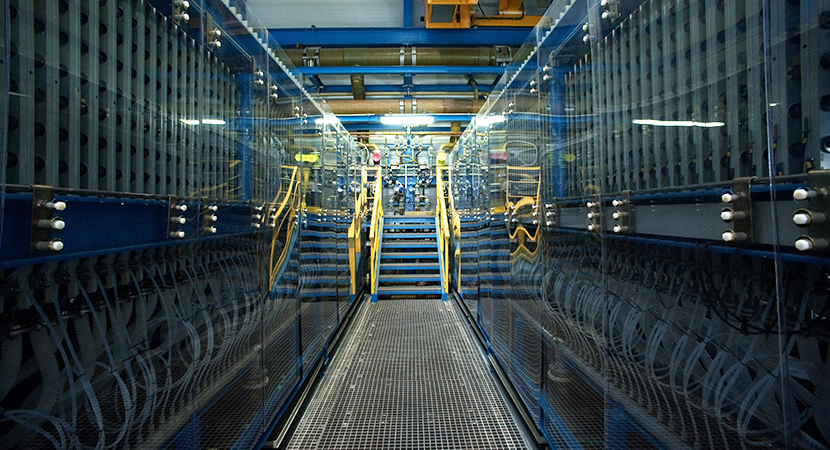Commissioning the second membrane electrolysis plant in April 2015 completed the transition of chlorine production to the modern, ecologically sound membrane technology. Using this technology enables a reduction of CO2 emissions by 140,000 tonnes annually from May 2015 onward. Having finished this investment project, we were able to comply with the EU requirement to decommission facilities using the mercury cell process nearly three years early. Our first membrane electrolysis plant has been operational since 2010.
| Principal: | PCC Rokita SA |
| Location: | Factory site of PCC Rokita SA in Brzeg Dolny (Poland) |
| Commissioned: | Part 1: March 2010 / Part 2: April 2015 |
| Project description: | The commissioning of our new chlor-alkali electrolysis facility was completed in April 2015, marking the conclusion of our full-scale technology switch to the environmentally friendly membrane process. In taking this step, we have both significantly extended the capacity of our production facilities and met future environmental regulations ahead of the relevant deadlines. Power consumption has decreased substantially. In comparison to the conventional amalgam process, we are since saving 750 kilograms of CO2 per ton of caustic soda produced. In mid July 2015, PCC Rokita SA achieved a planned further increase of its chlorine production capacity. The addition of a fifth electrolyzer to the new membrane electrolysis plant marked for the time being the completion of the last expansion phase of the new chlor-alkali electrolysis facility. In 2016 and 2017, planned process optimizations followed. Overall, PCC Rokita SA increased the annual chlorine production capacity by an additional 10% to 148,000 tons of chlorine and 167,000 tons of caustic soda. |

